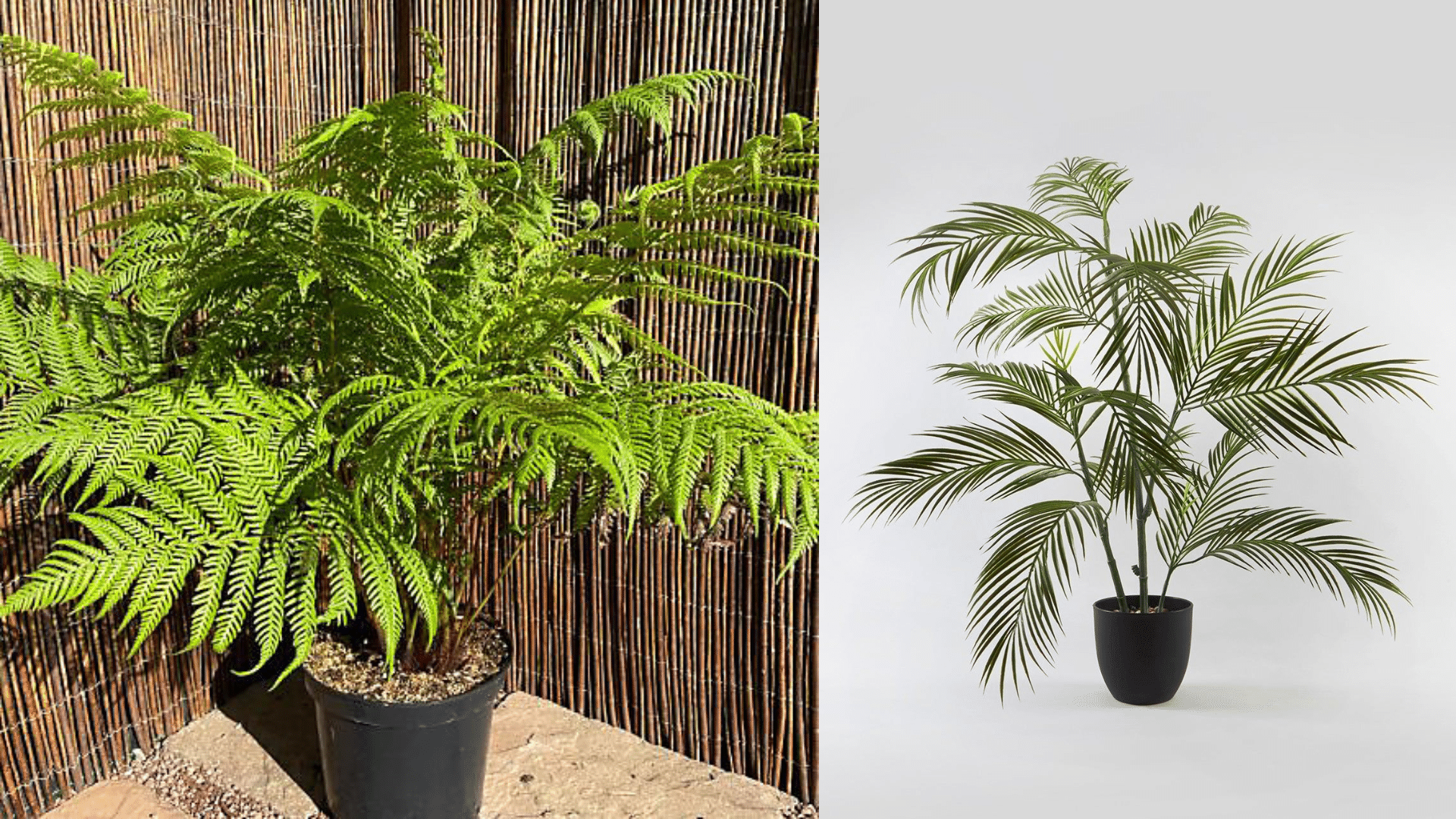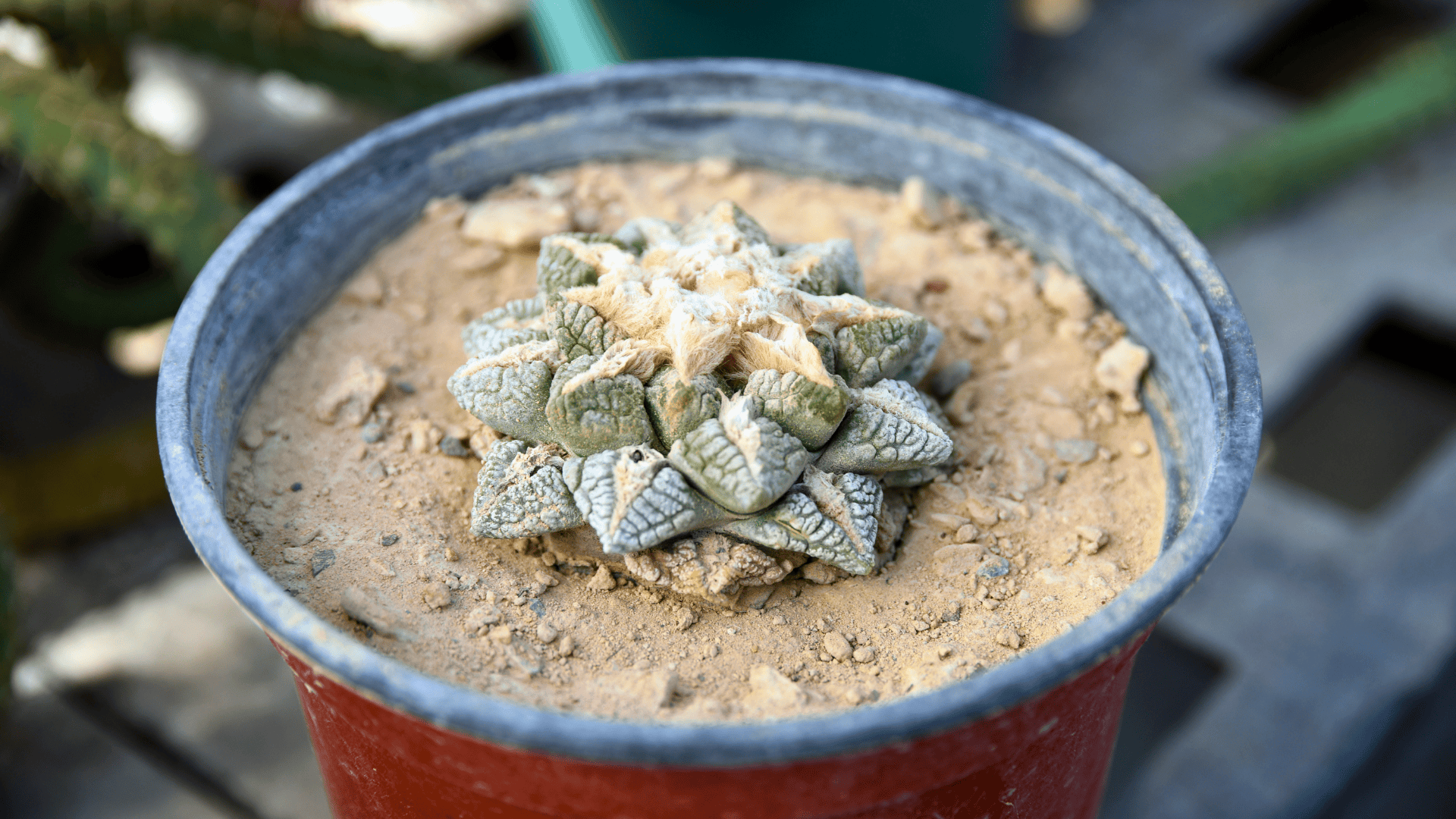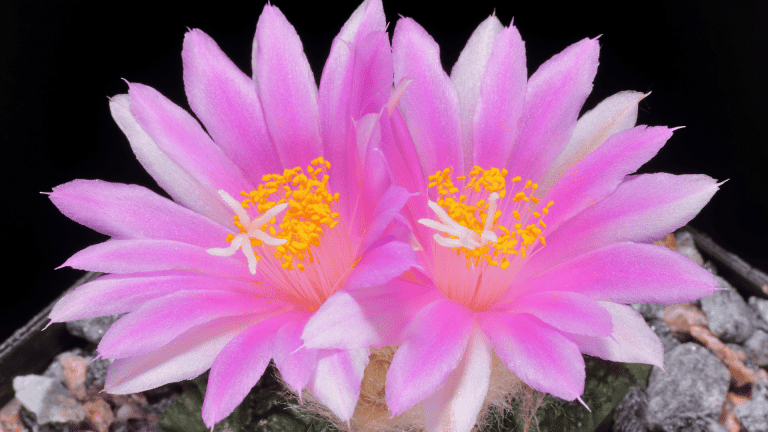Have you ever seen a cactus that looks like a rock? That’s Ariocarpus fissuratus, a strange but amazing little plant.
Many people want rare cacti like this but don’t know how to care for them. They either water too much or don’t give them the right light. That’s where this guide comes in.
We’ll keep things simple and easy to follow. You’ll learn what this cactus is, where it grows, how big it gets, how to take care of it, and how to grow your own.
If you’re curious about rare plants or want something cool in your collection, this guide is for you. Let’s find out why this cactus is so special!
What is Ariocarpus fissuratus?
Ariocarpus fissuratus is a rare cactus that looks more like a rock than a plant. That’s why it’s called the “Living Rock Cactus.”
It grows in the deserts of northern Mexico and southwest Texas. You’ll find it on dry limestone hills and rocky ground, usually between 500 to 1,170 meters (1,600–3,800 feet) above sea level.
The plant is small and flat, with thick, triangle-shaped bumps called tubercles. These bumps lie low against the soil and help the plant blend into its surroundings.
Its rough, gray-green skin looks just like the rocks nearby, helping it stay hidden from animals and harsh sunlight.
In the fall, it grows bright pink to purple flowers from the center. This surprise splash of color is one of its most beautiful features.
Different Varieties of Ariocarpus fissuratus
Some special types of Ariocarpus fissuratus look even more unique. These are often grown by cactus collectors.
Godzilla
This cultivar is famous for its rugged, bumpy surface. The tubercles are thick and lumpy, almost like tiny mountains.
The plant is grayish-green and can grow flowers in bright pink or magenta during fall. It looks tough, like something from the age of dinosaurs.
Godzilla (Cotton Flock Type)
This version is extra woolly. The surface is covered in long, soft hairs that make it look fuzzy and unusual. It still has the same rough tubercles, but the wool gives it a softer appearance.
These rare forms are slow-growing but worth the wait. They show off the variety and charm this cactus species has to offer.
Height and Growth of Ariocarpus fissuratus
Ariocarpus fissuratus is a very slow-growing cactus. It usually stays small, reaching only about 2 to 5 cm (around 1 to 2 inches) tall and up to 10 cm (4 inches) wide.
It grows flat against the ground with no visible stem. Most of its body is underground, helping it survive in harsh desert conditions.
It can take 8 to 10 years for this cactus to reach flowering size. In some cases, it may take even longer, especially when grown from seed.
Growth depends on things like:
- Sunlight: It needs bright, indirect light.
- Watering: Too much water slows growth or causes rot.
- Pot size: Smaller pots help control water and prevent overgrowth.
- Soil: Fast-draining soil is a must.
Patience is key with this plant. But with the right care, it can live for decades and become a beautiful part of any collection.
Care and Maintenance

To keep Ariocarpus fissuratus healthy, you need to follow a few key steps. This low-maintenance but very slow-growing cactus needs the right setup from the start.
Planting and Potting
- Use a shallow pot with drainage holes to prevent root rot.
- Choose a gritty soil mix. Mix cactus soil with sand, pumice, or perlite (about 50/50). Avoid rich or moist soil.
- Don’t bury the whole plant. Keep the top above the soil line so it can breathe.
Tip: Terracotta pots are best; they let moisture escape.
Watering
- Water deeply, but only when the soil is bone dry.
- During spring and summer, water every 3–4 weeks.
- In the fall and winter, stop watering completely. The plant is dormant and doesn’t need it.
Watch for:
- Soft, mushy tubercles: too much water
- Shrinking or wrinkling: wait until dry, then water
Light and Temperature Needs
- Give it bright, indirect sunlight or morning sun. Avoid strong afternoon rays.
- The ideal temperature is 70–90°F (21–32°C).
- It can handle down to 45°F (7°C), but protect it from frost.
Tip: Grow lights work well indoors; keep them 12–18 inches above the plant.
Fertilizing
- Fertilize once a month during spring and summer only.
- Use a diluted cactus fertilizer (low in nitrogen).
- Never fertilize in winter, as it will confuse the plant.
Quick rule: Water first, then fertilize. Never fertilize dry soil.
Propagation of Ariocarpus fissuratus

Propagating Ariocarpus fissuratus can be slow and tricky, but it’s also rewarding. There are two main methods: growing from seed and grafting. Each one has its own steps and challenges.
1. Seed Propagation
- Sowing: Fill a shallow tray with a sterile, well-draining cactus mix. Sprinkle the seeds evenly over the surface without covering them, as they require light for germination.
- Moisture Maintenance: Lightly mist the surface to moisten the seeds. Ensure the medium remains consistently moist but not waterlogged.
- Lighting and Temperature: Place the tray in a location with bright, indirect sunlight. Maintain a temperature around 75–85°F (24–29°C).
- Germination Time: Be prepared for a waiting period of several months, as germination is slow.
Considerations
- Time Investment: This method is time-consuming, with seedlings potentially taking years to reach maturity.
- Environmental Control: Avoid direct sunlight and ensure humidity levels are controlled to prevent mold and promote healthy growth.
2. Grafting
- Selecting a Cutting: Choose a healthy, mature tubercle from the parent plant.
- Preparation: Allow the cut end of the tubercle to dry and form a callus over 1–3 days. This step helps prevent rot when planting.
- Planting: Once callused, plant the tubercle in a shallow pot filled with a well-draining cactus mix.
- Watering: Water sparingly, ensuring the soil is dry before the next watering.
Considerations
- Success Rate: While this method can be faster, not all cuttings may successfully root.
- Root Development: Roots may develop slowly, and the plant will remain small for an extended period.
Additional Tips
- Grafting: To accelerate growth, some cultivators use grafting techniques, attaching Ariocarpus seedlings to faster-growing rootstocks like Pereskiopsis. This method requires specific expertise and equipment.
- Patience: Regardless of the chosen method, cultivating Ariocarpus fissuratus is a long-term endeavor.
- Environmental Conditions: To enhance the chances of successful propagation, maintain optimal conditions, bright, indirect light, appropriate temperatures, and well-draining soil.
Propagation Challenges
- Slow growth: Even healthy seedlings grow very slowly. Patience is key.
- Rot: Too much water or poor airflow can kill seedlings. Keep soil just slightly damp.
- Sunburn: Young plants are sensitive. Always give soft light, not direct sun.
- Damping-off disease: Use clean tools and soil to prevent fungus.
Tip: If you want faster results, try grafting your seedlings once they sprout.
By selecting the propagation method that aligns with your resources and patience level, you can gradually expand your collection of this unique cactus.
Common Problems with Ariocarpus fissuratus
Ariocarpus fissuratus may be a desert survivor, but when grown in pots, it can still face a few problems.
Most issues come from overwatering, poor lighting, or pest attacks. Learning how to spot these early will help you keep your plant healthy and growing strong.
1. Overwatering
One of the biggest problems is overwatering. This cactus doesn’t like wet roots. If the soil stays damp too long, the plant can start to rot from the base.
You might notice soft or mushy spots, yellowing, or even a bad smell. If this happens, stop watering right away. Let the soil dry out completely.
In serious cases, you may need to remove the plant, cut off the rotten parts, and repot it in dry, well-draining soil.
2. Lighting
Another common issue is poor lighting. If the plant doesn’t get enough sunlight, it will stretch out and look pale or weak.
Place your cactus in a bright spot with lots of indirect sunlight. If you grow it indoors, a south-facing window or a grow light will help.
3. Pests
Pests like mealybugs and spider mites can also be a problem. These bugs hide in the folds of the plant and suck out its juices.
You might see white, cottony spots or tiny red dots. If you notice bugs, wipe them off with a cotton swab dipped in rubbing alcohol. You can also spray the plant with cactus-safe insect soap.
Troubleshooting
To avoid most problems, use fast-draining soil, water only when the soil is dry, and keep the plant in a sunny place.
Regular checks for bugs and soft spots can also help catch problems early. With the right care, your Ariocarpus fissuratus can stay healthy for years.
Medicinal and Psychoactive Properties
Ariocarpus fissuratus, often called “false peyote,” has been a subject of interest due to its chemical makeup and traditional uses.
Unlike true peyote (Lophophora williamsii), which contains mescaline, Ariocarpus fissuratus does not have significant amounts of this psychoactive compound.
Instead, it contains other alkaloids such as hordenine, N-methyltyramine, and N-methyl-3,4-dimethoxy-β-phenethylamine.
These substances have mild stimulant properties but are present in quantities too small to produce noticeable psychoactive effects.
Therefore, the common belief that Ariocarpus fissuratus is psychoactive like peyote is a misconception.
Cultural Significance of Ariocarpus fissuratus
Historically, certain Native American tribes, including the Tarahumara, have utilized Ariocarpus fissuratus in their cultural practices.
The Tarahumara referred to this cactus as “híkuri sunami,” attributing magical properties to it.
They used it medicinally, applying it as a poultice for bruises, bites, and wounds, leveraging its mild stimulant properties to aid in healing.
Additionally, runners consumed it to prepare for long-distance races, believing it enhanced endurance.
However, its role was relatively minor compared to other sacred plants, and its use as a psychoactive substance was limited.
Conservation Status and Legal Considerations
Ariocarpus fissuratus is currently listed as “Least Concern” on the IUCN Red List, which means it’s not at immediate risk of extinction. However, the species still faces real threats in the wild, especially due to human activity.
One of the biggest concerns is illegal collection. Thousands of these cacti have been taken from their natural habitats, particularly in Texas, to be sold to plant collectors in other countries.
This not only lowers the number of plants in the wild but also reduces genetic diversity, making the species weaker over time.
To help protect it, Ariocarpus fissuratus is listed in Appendix I of CITES (the Convention on International Trade in Endangered Species).
This means the plant is protected by international law, and trade is strictly regulated. If you’re planning to buy one, it’s important to choose a legal and ethical source.
Supporting responsible growers helps protect wild populations and ensures this unique cactus will continue to survive for future generations.
Conclusion
If you plan to grow Ariocarpus fissuratus, start with well-draining soil and a pot with drainage holes.
Water only when the soil is completely dry, and place the plant where it gets bright but soft sunlight.
This cactus grows slowly, so patience is important. With the right care, it can live for many years and bloom with beautiful flowers in the fall.
If you decide to get one, make sure to buy it from a legal and trusted source to help protect wild plants.
Looking for more plant care tips? Read our other blog posts to learn about different types of cacti and how to care for them.













